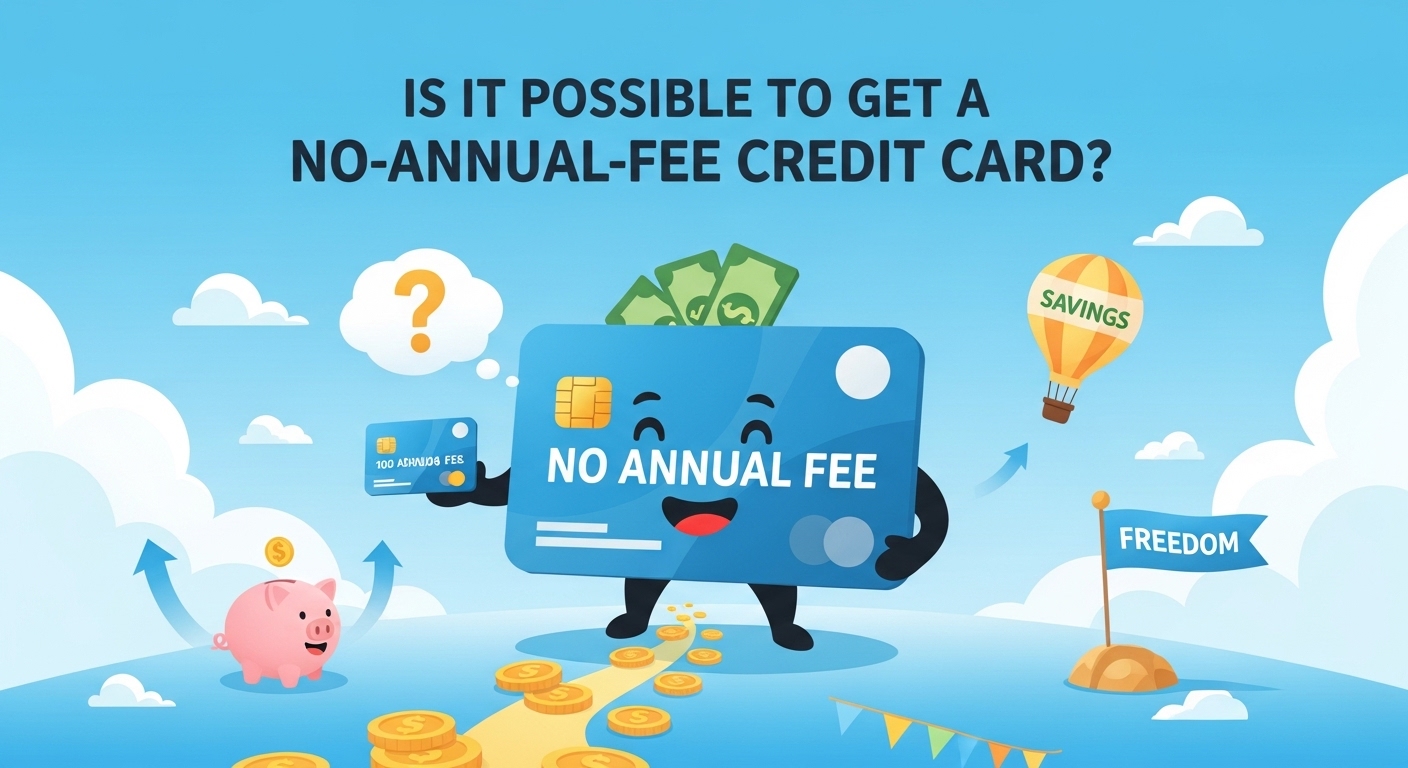Is It Possible to Get a No-Annual-Fee Credit Card?

Credit cards are among the most convenient financial tools available today — they offer security, flexibility, and rewards. However, one of the main drawbacks that many users dislike is the annual fee. The good news is that no-annual-fee credit cards do exist, and they can be an excellent choice for people who want to enjoy the benefits of credit without paying extra costs.
In this article, we’ll explain what no-annual-fee credit cards are, how they work, and how to choose the best one for your financial goals.
1. What Is a No-Annual-Fee Credit Card?
A no-annual-fee credit card is a type of credit card that doesn’t charge a yearly fee for ownership or usage.
Most credit cards come with an annual fee ranging from $25 to several hundred dollars, depending on the card’s features and reward programs. Cards without fees, however, offer a more budget-friendly option — perfect for people who want basic functionality and financial flexibility without the extra costs.
In short: You get access to credit, payment convenience, and sometimes rewards — without paying a fixed yearly charge.
2. How Do No-Annual-Fee Credit Cards Work?
Just like regular credit cards, no-annual-fee cards allow you to:
- Make purchases and pay them off later
- Build your credit history
- Enjoy benefits like cashback or points (depending on the card)
The main difference is that you don’t pay a maintenance fee every year. However, these cards may come with fewer perks or lower reward rates compared to premium cards that charge fees.
3. Who Should Consider a No-Annual-Fee Credit Card?
A no-annual-fee credit card is ideal for:
- Students or first-time cardholders: People who are new to credit and want to build a history without extra costs.
- Budget-conscious individuals: Those who prefer simple financial products with no hidden fees.
- People who rarely use credit cards: If you don’t spend enough to earn high rewards, there’s no need to pay for an expensive card.
- Backup card users: If you already have a primary card, a no-fee card can serve as a secondary option without additional cost.
Essentially, it’s great for anyone who wants convenience and financial control — not luxury perks.
4. Benefits of No-Annual-Fee Credit Cards
Here’s why many consumers prefer these cards:
✅ Cost Savings — You don’t have to worry about paying annual fees, making it easier to maintain multiple cards or low balances.
✅ Simplicity — No complex reward programs or hidden charges to track.
✅ Ideal for Long-Term Use — Keeping a no-fee card open for years helps improve your credit score by increasing your credit history length.
✅ Access to Basic Rewards — Some no-fee cards still offer cashback or points, though at modest rates.
✅ Peace of Mind — You can keep your account active without worrying about losing value if you don’t use the card often.
5. Limitations of No-Annual-Fee Credit Cards
Of course, no product is perfect. Before applying, it’s important to understand the potential drawbacks:
- Lower Rewards or Benefits: Premium cards with annual fees often offer better cashback, travel insurance, and lounge access.
- Higher Interest Rates: Some no-fee cards compensate with slightly higher interest rates (APR).
- Limited Perks: You may miss out on premium services like concierge, airport lounge access, or extensive travel insurance coverage.
If you’re a frequent traveler or big spender, a paid card with rich rewards might still be more valuable in the long run.
6. How to Find the Best No-Annual-Fee Credit Card
Here’s what to consider before applying:
- Compare reward structures: Some cards offer 1–2% cashback on all purchases, while others provide higher rates for groceries, gas, or dining.
- Check the interest rate (APR): Even without an annual fee, you’ll pay interest if you carry a balance.
- Look for extra perks: Some no-fee cards include free purchase protection, extended warranty, or fraud monitoring.
- Read the fine print: Make sure there are no hidden costs, such as foreign transaction fees or balance transfer fees.
- Consider the issuer’s reputation: Choose banks or financial institutions with transparent policies and reliable customer service.
7. Examples of Common No-Annual-Fee Credit Cards
While options vary by country, here are common categories of no-fee cards:
- Cashback Cards: Earn small cashback amounts on everyday purchases.
- Student Cards: Designed for beginners with low credit limits and easy approval.
- Basic Rewards Cards: Offer simple points or miles for each purchase.
- Low-Interest Cards: Focus on lower APR instead of big rewards.
In most regions, major banks offer at least one no-annual-fee card for consumers who prioritize affordability.
8. Tips for Managing No-Annual-Fee Cards Wisely
Even though there’s no yearly charge, responsible management is still essential:
- Pay your balance in full every month to avoid interest.
- Track your spending to prevent unnecessary debt.
- Keep your card active with small, regular purchases — inactivity could lead to automatic cancellation.
- Monitor your credit score to ensure your card helps improve your financial standing.
Remember, no-annual-fee doesn’t mean risk-free. Late payments and high utilization can still hurt your credit.
9. Should You Choose a No-Annual-Fee Card or a Paid Card?
The right choice depends on your lifestyle and spending habits:
| Category | No-Annual-Fee Card | Paid (Premium) Card |
|---|---|---|
| Cost | $0 per year | $50–$600+ per year |
| Rewards | Basic cashback or points | Higher rewards and perks |
| Best for | Budget users, students, casual spenders | Frequent travelers, high spenders |
| Maintenance | Simple, low-risk | Requires active use to justify cost |
If you rarely travel or spend modestly, a no-annual-fee card is the smarter choice.
10. Final Thoughts
Yes — it is absolutely possible to get a credit card with no annual fee, and for many people, it’s the best option. These cards combine convenience, flexibility, and cost savings, making them ideal for everyday financial management.
Whether you’re new to credit or simply want a backup card that doesn’t cost extra, a no-fee card can fit perfectly into your financial strategy. Just remember to compare offers, read the fine print, and use your card responsibly to make the most of its benefits.
